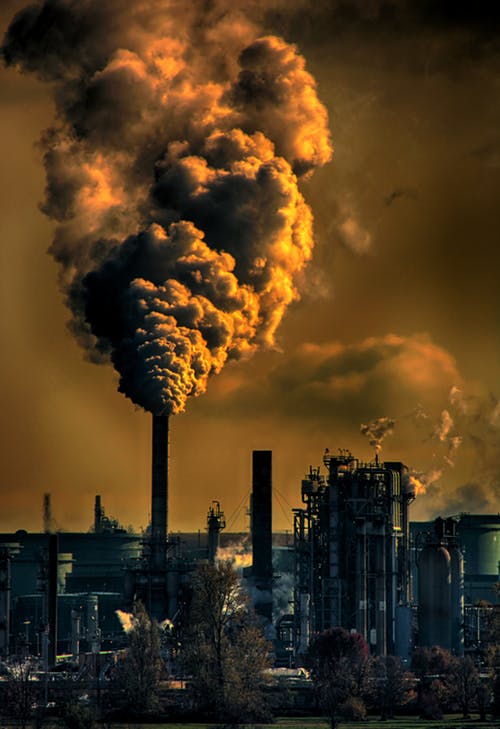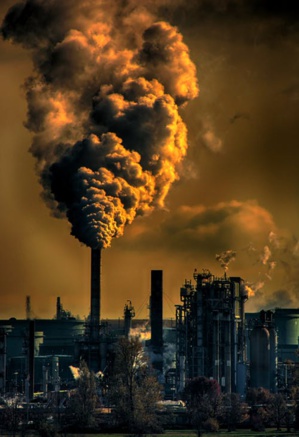Dailycsr.com – 30 May 2020 – With the ongoing COVID-19 pandemic, scientists are still trying to find out what could “make people more vulnerable to infection”. One factor that comes to mind is air pollution wherein one specifically inhales “particles smaller than 2.5 micrometers in diameter” for this kind of pollution has caused various respiratory problems besides other health issues.
Moreover, COVID-19 virus affects the respiratory tract therefore the concern about the “PM2.5 exposure” making people more vulnerable to the virus. As “Carolyn Swope, MPH and Regina Vaicekonyte, MS” stated:
“So how might pollution relate to Covid-19? There are two main pathways. First, pollution itself might make people more vulnerable to getting the virus or to having worse outcomes if they are infected. And second, pollution can contribute to the development of chronic conditions, which in turn put people at greater risk”.
One possible connection between exposure to air pollution and respiratory infection is that the former causes “inflammation in the body” which weakens the immunity, while it is still being examined if “pollutant particles increase the infectivity of viruses in the air”. While, Swope informed:
“A well-studied example is lower respiratory infections – which are often caused by viruses. The Global Burden of Disease study estimates that over 44 million years of healthy life are lost annually due to lower respiratory infections caused by particulate matter pollution. Researchers in a large-scale study in Utah found that each short-term increase of 10 micrograms per cubic meter (μg/m3) in PM2.5 levels was linked to respiratory issues. Specifically, the odds of a healthcare encounter for an acute lower respiratory infection rose 15-32% across age groups”.
Moreover, during SARS epidemic, which is a close relative of COVID-19 virus, the connection between sir pollution and respiratory illness were established. A study had found that the SARS patients who lived in high air pollution areas were worse hit by the pandemic. However, “we’re still early in the pandemic” of COVID-19, although data from “Harvard T.H. Chan School of Public Health” point at the fact that people living in “higher air pollution” areas were open to “greater risk of severe outcomes from Covid-19”.
As far as data has been gathered, we understand that not all infected COVID-19 victims face the “same level of risk”. People with chronic conditions like “ischemic heart disease (IHD), diabetes, chronic kidney disease, and severe obesity” were at “greater risk”. Furthermore, “chronic obstructive pulmonary disease” or asthma patients were also in more vulnerable category. Even though, most of these problem stem from lifestyle-related problems yet air pollution also has a great hand behind them.
Therefore people with chronic conditions were at greater risk to novel coronavirus. Furthermore, Swope added:
“While air pollution levels have been seeing a dramatic decrease everywhere due to a drop in manufacturing, travel, and other emission-producing activities, this doesn’t mean that people who are now breathing cleaner air are therefore at a lower risk of Covid-19 complications. Unfortunately, the effects of air pollution harm the respiratory system and lead to related chronic conditions over many years or decades, so a drop of several weeks or months in pollution levels does not translate to lower risk”.
In order to make the situation better, we need to adapt a “long-term approaches” of cutting down “ambient air pollution” including transitioning to cleaner energy and reducing as well as ultimately “reversing decades of intense air pollution” across the globe. However, time is not in our favour and we need to immediately respond to the pandemic. Currently, as people are spending more time indoor in an attempt to contain the spread of the virus, we need to concentrate on “indoor air quality”. Here are some steps that could be followed to create a better indoor air quality, as mentioned by Swope:
Moreover, COVID-19 virus affects the respiratory tract therefore the concern about the “PM2.5 exposure” making people more vulnerable to the virus. As “Carolyn Swope, MPH and Regina Vaicekonyte, MS” stated:
“So how might pollution relate to Covid-19? There are two main pathways. First, pollution itself might make people more vulnerable to getting the virus or to having worse outcomes if they are infected. And second, pollution can contribute to the development of chronic conditions, which in turn put people at greater risk”.
One possible connection between exposure to air pollution and respiratory infection is that the former causes “inflammation in the body” which weakens the immunity, while it is still being examined if “pollutant particles increase the infectivity of viruses in the air”. While, Swope informed:
“A well-studied example is lower respiratory infections – which are often caused by viruses. The Global Burden of Disease study estimates that over 44 million years of healthy life are lost annually due to lower respiratory infections caused by particulate matter pollution. Researchers in a large-scale study in Utah found that each short-term increase of 10 micrograms per cubic meter (μg/m3) in PM2.5 levels was linked to respiratory issues. Specifically, the odds of a healthcare encounter for an acute lower respiratory infection rose 15-32% across age groups”.
Moreover, during SARS epidemic, which is a close relative of COVID-19 virus, the connection between sir pollution and respiratory illness were established. A study had found that the SARS patients who lived in high air pollution areas were worse hit by the pandemic. However, “we’re still early in the pandemic” of COVID-19, although data from “Harvard T.H. Chan School of Public Health” point at the fact that people living in “higher air pollution” areas were open to “greater risk of severe outcomes from Covid-19”.
As far as data has been gathered, we understand that not all infected COVID-19 victims face the “same level of risk”. People with chronic conditions like “ischemic heart disease (IHD), diabetes, chronic kidney disease, and severe obesity” were at “greater risk”. Furthermore, “chronic obstructive pulmonary disease” or asthma patients were also in more vulnerable category. Even though, most of these problem stem from lifestyle-related problems yet air pollution also has a great hand behind them.
Therefore people with chronic conditions were at greater risk to novel coronavirus. Furthermore, Swope added:
“While air pollution levels have been seeing a dramatic decrease everywhere due to a drop in manufacturing, travel, and other emission-producing activities, this doesn’t mean that people who are now breathing cleaner air are therefore at a lower risk of Covid-19 complications. Unfortunately, the effects of air pollution harm the respiratory system and lead to related chronic conditions over many years or decades, so a drop of several weeks or months in pollution levels does not translate to lower risk”.
In order to make the situation better, we need to adapt a “long-term approaches” of cutting down “ambient air pollution” including transitioning to cleaner energy and reducing as well as ultimately “reversing decades of intense air pollution” across the globe. However, time is not in our favour and we need to immediately respond to the pandemic. Currently, as people are spending more time indoor in an attempt to contain the spread of the virus, we need to concentrate on “indoor air quality”. Here are some steps that could be followed to create a better indoor air quality, as mentioned by Swope:
- “Ventilation First. Whether you have a mechanical ventilation system or rely on natural ventilation (i.e., windows), make sure that your space does not lack fresh air. A general guideline is for carbon dioxide (CO2), a key indicator of air freshness, not to exceed 600-800 ppm. You can tell if there’s a lack of fresh air when a room smells “stuffy”; this is due to a higher concentration of CO2. In fact, CO2 concentrations can easily reach several times those recommended for indoor environments. For example, sleeping in a poorly ventilated bedroom can lead to CO2 levels above 2,000 ppm over the course of the night.
- “Air Purification. Indoor sources of air pollution include cooking, off-gassing from materials and indoor finishes, and polluted outdoor air that makes its way indoors. Air purifiers can help to ensure that the air you breathe is clean and free of harmful pollutants. Many standalone air purifiers are readily available (although shipping times may be delayed due to the coronavirus), but it can be tricky to pick a good one. Stay tuned for a follow-up blog post focused on how to pick the best air purifier for your home. If you already use an air purifier, make sure to place it in a room or area that you frequently occupy, or consider getting multiple air purifiers to cover the bulk of your home.
- “Air Quality Monitoring. IAQ sensors can measure the levels of a range of pollutants, including CO2, PM2.5, PM10, total volatile organic compounds (TVOCs), and ozone. Knowing the levels of these pollutants inside your home can help you take action to improve your air quality. Meanwhile, looking up outdoor air quality in your area can help you decide when to open your windows to let in fresh air, as doing so when outdoor air quality is poor could lead to a decrease in IAQ”.
References:
3blmedia.com


 Does Air Pollution Have Any Link To COVID-19?
Does Air Pollution Have Any Link To COVID-19?





 Companies
Companies